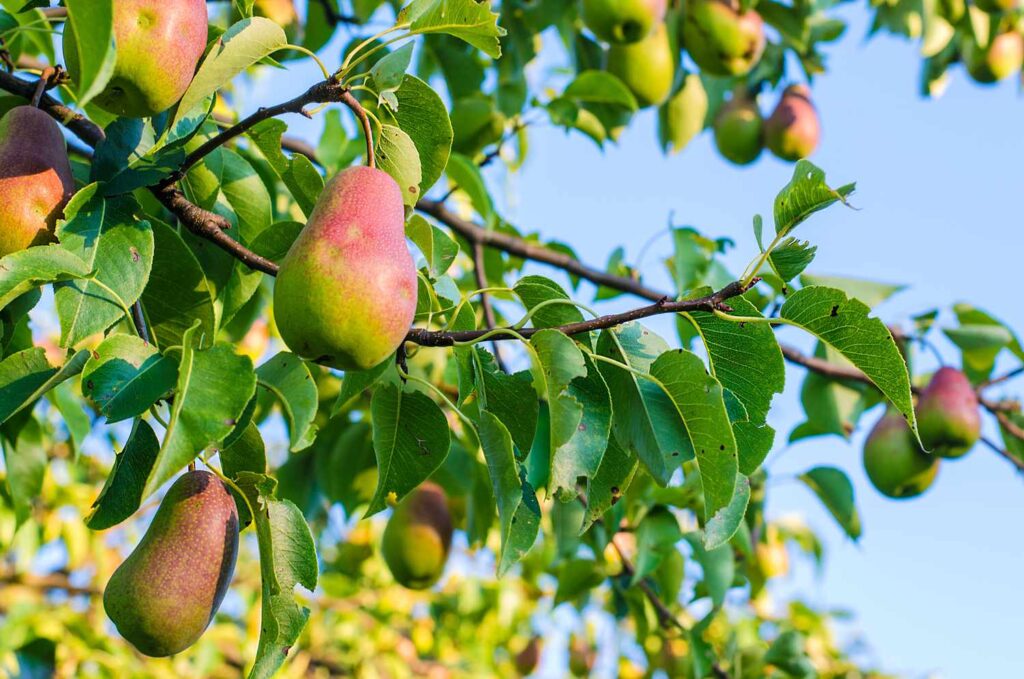Hand Thinning
Fruit set on pears is similar to apples; and pears benefit accordingly from hand thinning of excess fruit. A space of six inches between fruit is optimum. Thinning can be done as soon as “June drop” is over.
Rootstocks
The number of pear rootstocks in use today is not as varied as the apple rootstocks, but the reasons for choosing the rootstock will still be similar. In the home orchard you will most likely want the size controlling characteristic of a dwarfing rootstock. Disease resistance will also be important. The major pear rootstocks available today are:
Pyrus calleryana. This rootstock will produce the largest pear trees at about 115% of standard seedling size. Its strongest attributes are that it is quite tolerant of heavy, wet soils and resistant to fireblight, woolly aphids, and nematodes. In locations with cold winters, it is not as winter hardy as the other stocks and is best suited for use in the southern United States, the West Coast, and regions where winters are mild.
Bartlett Seedling. Bartlett seedling rootstock is normally considered to be the standard 100% size that other pear stocks are measured against. The most commonly used pear rootstock, Bartlett seedling is vigorous growing and winter hardy. It has a well anchored root system, forms excellent graft unions with all of today’s commercially available varieties, and is well adapted to wet soils. Its main faults are high susceptibility to fireblight and moderate susceptibility to bacterial canker and crown gall.
OHxF333 (OHxF513). These rootstocks are numbered selections from crosses of the Old Home and Farmingdale pear varieties. At about 50% of standard size, they are fireblight resistant and quite winter hardy. OHxF333 also performs quite well as a rootstock for Asian pear varieties.
Quince. As a series, quince rootstocks are among the most dwarfing available for pear today. Quince A is about 50% of standard size and Quince C produces a tree as small as 30% of standard. They tend to be susceptible to freeze damage in northern areas but are suited for use on the West Coast and southern East Coast. Although resistant to nematodes, Quince rootstocks are not well adapted to heavy, wet soils. They are also moderately fireblight susceptible.
Vigorous scion varieties are best paired with Quince rootstocks, although, not all scion varieties can be compatibly grafted to quince. Often the in-compatibility does not appear until trees are several years old. To overcome graft union incompatibility with Bartlett, Bosc, Clapp’s Favorite, Forelle, El Dorado, Packham’s Triumph, Seckel, and Winter Nellis and interstem of Old Home is often used.
Pyrodwarf. Still under testing, Pyrodwarf is the newest dwarfing rootstock for pears. It might be worth trying for the adventurous ochardist with limited space.







